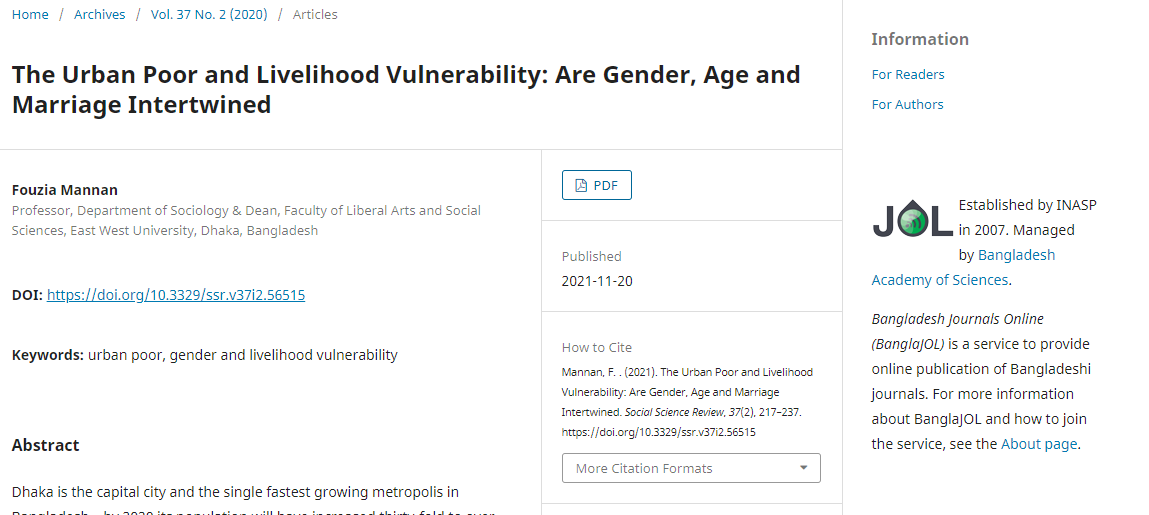

12
Dec
The Urban Poor and Livelihood Vulnerability: Are Gender, Age and Marriage Intertwined | Recent publication by Dr. Fouzia Mannan
Our faculty member Dr. Fouzia Mannan, Professor, Department of Sociology, East West University, in her recent paper explored the question of whether gender, age and marital status are indeed linked to livelihood vulnerability among the urban poor. It has utilized qualitative methods of data collection -FGDs, case studies (based on in depth-interviews) and participant observation from a selected slum in Dhaka- Begultila. Results of this study has indicated that both physical and emotional vulnerabilities have a crucial impact on the livelihood pattern of the slum dwellers of Begultila.
Dhaka is the capital city and the single fastest growing metropolis in Bangladesh – by 2020 its population will have increased thirty-fold to over ten million. This rapid population growth is largely facilitated by mass rural-to-urban migration. The speed of urbanization and the enormous numbers involved make it one of the major development challenges of the 21st century (World Bank & Bangladesh Centre for Advanced Studies, 1998). Neither public nor private facilities can meet the basic human needs (food, water, shelter, sanitation, and a safe environment) of slum dwellers, most of whom also lack livelihood security. To understand the magnitude of urban poverty, this research
To understand the state and nature of poverty in Begultila it is important to consider non-economic factors, which have a very strong role in enhancing vulnerability among the urban poor, particularly with children, women, and the elderly. This study sheds new light on urban poverty in relation to livelihood vulnerability; and consequently, highlights the diverse experiences of the urban poor and the livelihood insecurity that automatically categorizes them as one of the most vulnerable groups within the slum community. This form of livelihood vulnerability has a crucial effect on the nature and quality of life of the urban poor, particularly for women, which in turn, perpetuates the cycle of poverty.